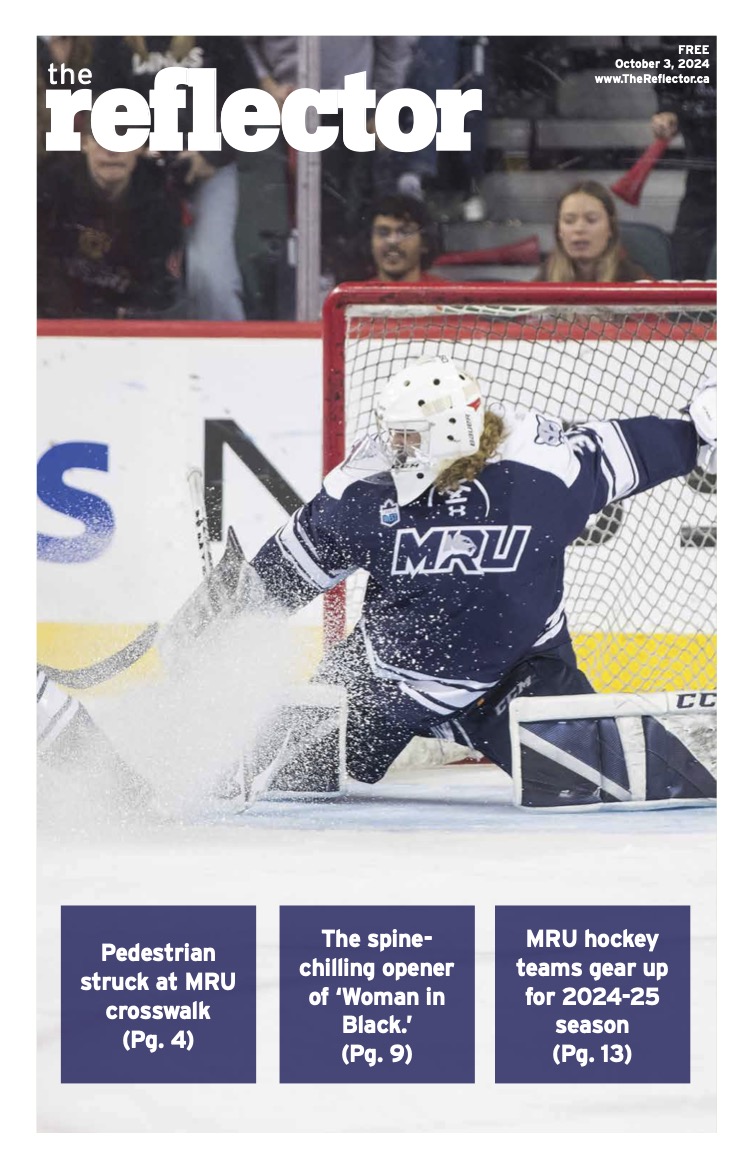A Little Less Pride at MRU?
SAMRU service restructure creates fear of losing Pride Centre
Beck Paterson
Staff Writer
Mount Royal University prides itself on the strong sense of inclusion and community cultivated on its campus, and part of that community are the many LGBTQ+ students that attend MRU. In the past, the university has shown its support for this particular community through activities such as the Hot Topic series, the ever-popular Gender Bender, and signs of support such as flying the Pride flag during the 2014 Sochi Olympic Winter Games in response to Russia’s anti-gay sentiments. But with recent emergence of rumours that the Students’ Association of Mount Royal University (SAMRU) was planning a restructure of student services—including removal of the Pride Centre—many LGBTQ+ students were left feeling less proud of MRU.
“If you’re heterosexual and cisgendered, you’ll go to the library, you’ll go to the bathroom—you won’t necessarily think about which bathroom to use because it’ll be quite obvious to you—maybe you’ll pop over and get something at Subway, and go wait for the bus. Those aren’t even necessarily all options for (LGBTQ+) individuals,” said Gin Volczuk, an Open Studies student who uses the Pride Centre.
Volczuk explains that a permanent space dedicated to LGBTQ+-identifying students is necessary for the well-being of the students who use the space,
“You really need that day-in-day-out, ‘Come in, take a load off, and you know what? Be yourself for a change.’ University is hard enough.”
Speculation that the Pride Centre would soon disappear from Wyckham house came following SAMRU conducting consultation focus groups with MRU students involved in various areas of campus life. Rumors circulated that all of the services offered to students on the second and third floors of Wyckham House would be removed, allowing for bookable rooms for different clubs and groups on campus to use. But, as Shereen Samuels, Director of Student Services at SAMRU, urges, these rumours are based on limited information, and the Pride Centre will remain a permanent fixture at the university.
“The context piece here is that the Students’ Association is constantly in the process of evaluating the services we provide to students to make sure they continue to be effective and relevant. We use student fees to provide those services so we want to make sure that they’re actually what students’ need,” said Samuels.
The restructuring will see the removal of several of SAMRU services, opening up more space for students to study and clubs or groups to book for meetings or other functions. Some services, however, will remain in fixed locations in Wyckham House, including the Peer Support Centre and the Pride Centre.
According to Samuels, this is a response to the changing needs and requests from MRU students. For example, the new restructure will see the closure of the Native Students Centre—a service that Samuels explains was intended to fill a gap in service for First Nations students that, at the time, the university could not. However, several years later, MRU opened the Iniskim Centre that offers many resources and support to First Nations learners, which made SAMRU’s Native Student Centre less necessary and even redundant.
“It became clear very quickly in the consultation process that (the Pride Centre) was something that students considered very valuable, something that we want to hang on to,” said Samuels.
“The sense that we got from the student input we received—and there was a ton of it—was that the most important purpose was a dedicated space for LGBTQ students on campus, so that’s what it’ll stay as.”
Another change as a result of the restructure that has students worried is how volunteers will be involved in the various SAMRU services. While the restructuring aims to have volunteers more involved with SAMRU organizations and services rather than just one area, Volczuk explains that having specific volunteers for a group such as the Pride Centre creates a safer space for those individuals.
“When you open up to general volunteers…it’s not (necessarily) people who want to work there. It’s not people who have that understanding,” said Volczuk.
However, Samuels explains that the changes are a result of feedback from current SAMRU volunteers that were feeling disconnected to the Students’ Association.
“We started changing the way we thought about (volunteer) roles,” said Samuels. “There have been a number of frustrations expressed regarding the volunteers over the years. Volunteers felt like they were attached only to their centres, and wanted broader connection with other volunteers…There was sometimes the sense that volunteers were attached to the centres instead of SAMRU, not understanding the link between (their role) and what that meant in terms of their connection to the Students’ Association.”
More serious implications of having set volunteers at each centre, according to Samuels, was the sense that those centres were “for” those volunteers, leading to lesser student engagement at each centre.
“Although the centres were meant to be delivering services to all members, the way members perceived it was that volunteers belonged more than non-volunteers.”
According to Samuels, the impact from the change in volunteer roles will hopefully be minimal, though the change will be positive.
With this restructure causing anxiety for many students who access SAMRU’s various services and service centres, the lack of information has been frustrating at best. Samuels explains that, because of confidentiality requirements regarding possible employment changes as a result of the restructuring, not all of the details of the changes were able to be released to students. As a result, the information circulating among students was based on limited information that came out of the consultation process—which was likely the cause of the rumour that SAMRU was getting rid of the Pride Centre. While SAMRU attempted to alleviate some of that fear in a post to their website reassuring students that the Centre will remain, Samuels is hopeful that now that SAMRU is in a position to release the details of the restructure, students will feel less anxious about the coming changes.
“Change is hard. Nobody enjoys it,” said Samuels. “Because we’re doing all this structural change, our goal in terms of actual services delivered to students, is to change as little of that as we possibly can…The same things (students) were able to access last year will almost entirely be the same things (students) can access in the coming year.”
Samuels urges students who still have concerns with the coming restructures to contact her directly.



